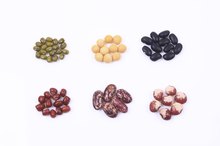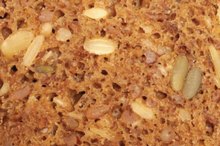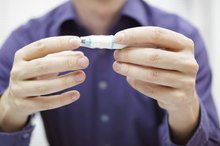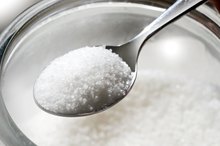No Starch Diet Plan
Starch is a complex carbohydrate made of long chains of sugar molecules. Starch is naturally abundant in certain fruits and vegetables. When you eat starch, enzymes in your body break it down into simple sugar, raising your blood-glucose level, inducing an insulin response. Excess sugar that is not used for energy will be stored in your body as fat. Therefore, reduced starch consumption may lead to better control of insulin level, better weight management and overall wellness.
Features
Developed by Jerry Sobieraj, M.D., in 2000, the no-starch diet is based on the effect of starch content in food on blood sugar and insulin level. The focus of the diet is to help with management of insulin level, making it beneficial for individuals who are diabetic or insulin-resistant. Sobieraj stressed that the no-starch diet is not the same as other low-carb diets such as the Atkins diet. The no-starch diet does not specifically limit your caloric intake. Instead, it focuses on cutting consumption to relieve stress on insulin and blood-sugar level. The no-starch diet allows you to eat fruits, most vegetables, legumes and most dairy, which are forbidden in other low-carb diets.
- Developed by Jerry Sobieraj, M.D., in 2000, the no-starch diet is based on the effect of starch content in food on blood sugar and insulin level.
- The no-starch diet allows you to eat fruits, most vegetables, legumes and most dairy, which are forbidden in other low-carb diets.
Glycemic Index, Starch and Blood Sugar
List of Slow & Fast Carbs
Learn More
Glycemic index is the measure of the effect of sugar in a food on blood-sugar level. High-GI foods are usually richer in starch, have a more dramatic increase on blood-sugar level and require maximum insulin functioning to normalize blood sugar. For example, starchy foods such as rice, bread, potatoes and noodles have a high GI and can lead to blood-sugar spike, whereas non-starchy foods such as leafy greens, meats, nuts and milk, have a low GI and are safer on blood-sugar level.
Foods to Eat and Avoid
In the no-starch diet, you need to reduce consumption of starchy foods and processed foods, including rice, potatoes, yams, turnips, corn, peas, potatoes, crackers, cakes, cookies, rolls, biscuits, cereals, pasta and noodles. Replace these foods with healthy fats, protein and carbohydrates such as seafoods, lean meats, chicken, turkey, low-fat dairy products except cheese, fruits of all kinds except canned fruits, legumes, eggs and nuts with the limitation of one ounce per day.
Benefits
List of Slow-Release Carbohydrate Foods
Learn More
Since starch is broken down into sugars in your body, excess consumption can lead to sugar accumulation and eventually weight gain. According to Mayo Clinic Proceedings, the no-starch diet can lead to weight loss and accompanied improvement in insulin sensitivity.The no-starch diet, and a low-GI diet, is not only beneficial to insulin level, but might also help to increase cardiovascular health by creating a more favorable lipid profile, according to the Journal of Nutrition and Metabolism.
Warning
As with all other diets, consult your doctor before you begin the no-starch diet.
Related Articles
References
- Journal of Nutrition and Metabolism: Dietary Glycemic Index, Dietary Glycemic Load, Blood Lipids and Coronary Heart Disease
- University of Sydney: Glycemic Index
- Mayo Clinic Proceedings: Effect of a High Saturated Fat and No-Starch Diet on Serum Lipid Subfractions in Patients With Documented Atherosclerotic Cardiovascular Disease
Writer Bio
Pik Ho has been writing nutrition-related articles for a weight-loss center, where she worked as a Nutrition Consultant, since 2008. Ho was ServSafe Certified in 2007. She holds a Bachelor of Science in Dietetics from San Francisco State University.








